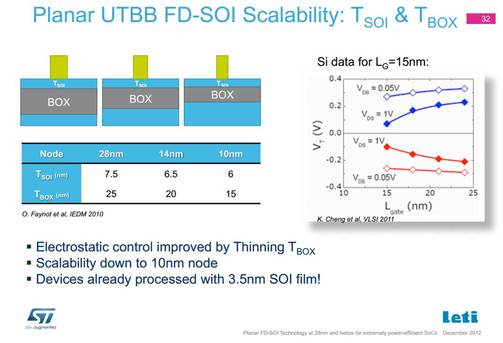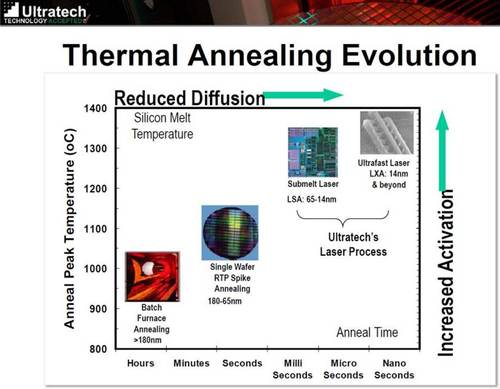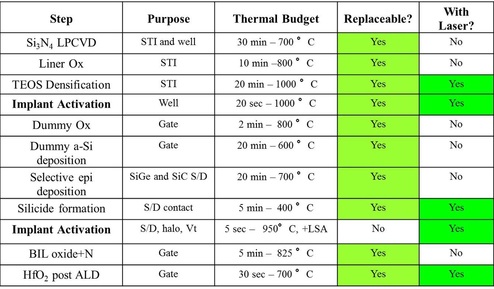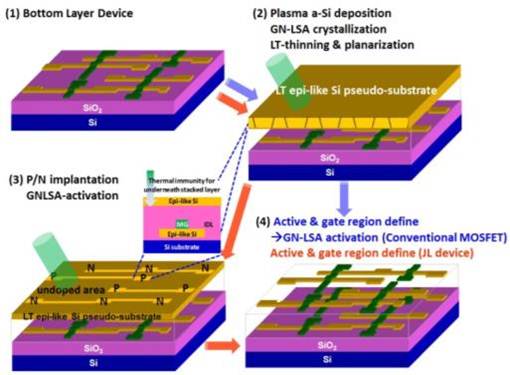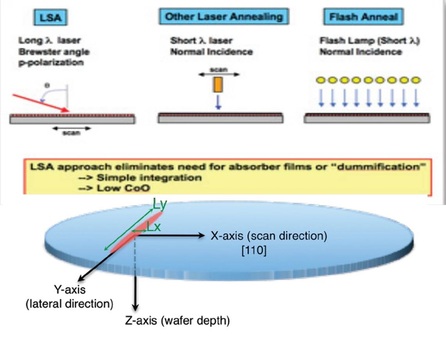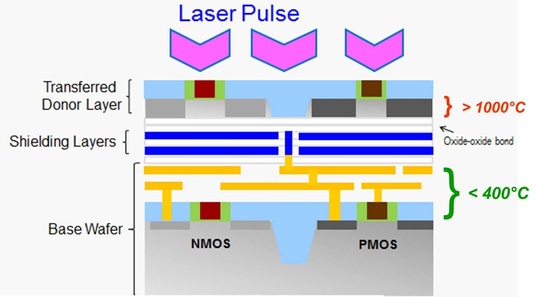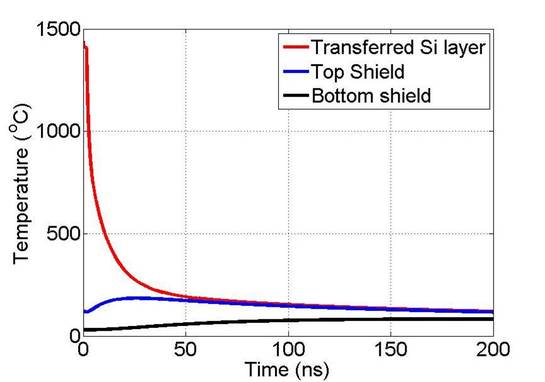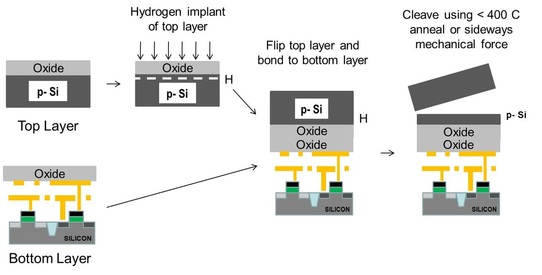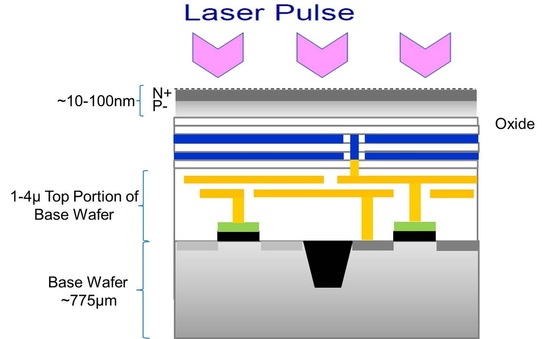Pulsed Laser Annealing: A scalable and practical technology for monolithic 3D IC
Two Major Semiconductor Trends Help Make Monolithic 3D Practical
As we have pushed dimensional scaling:
Much less mass to heat, and for much shorter time -> reduction in total thermal energy
- The volume of the transistor has scaled
- Processing temperatures have trended lower
Much less mass to heat, and for much shorter time -> reduction in total thermal energy
Laser Spike Annealing
- Goals
- Do not disrupt already-fabricated devices lying beneath the fresh Si layerIssues
- Thermal stress
- Heat transfer dynamics to underlying layers
- Approach
- Use combination of thermal/electrical insulators, and high heat capacity metallic shield layers
- All materials compatible with existing IC technology
Dopant Activation by Laser: IEDM 2013 Example
- Taiwan National Nano Device Laboratory: IEDM13-Paper #9.3
- “Researchers from Taiwan’s National Nano Device Laboratories avoided the use of TSVs by fabricating a monolithic sub-50-nm 3D chip, which integrates high-speed logic and nonvolatile and SRAM memories... The monolithic 3D architecture demonstrated high performance – 3 ps logic circuits, 1T 500ns nonvolatile memories and 6T SRAMs with low noise and small footprints…”
Laser Spike Annealing of Top Monocrystalline Silicon Layer
Laser Spike Annealing of Top Monocrystalline Silicon Layer
Ion-Cut Applied to Monolithic 3D
Pulsed Laser Anneal May Be Used to Repair Ion-Cut Lattice Damage of Top Monocrystalline Silicon Layer
Conclusions
- Monolithic 3D IC technology is a leading approach to extend IC scaling beyond the 7-10 nm nodes
- Use of laser spike annealing on a thin layer of c-Si, combined with metal and insulator thermal shield layers, allows:
- No disruption to underlying structures
- Annealing of ion-cut damage
- Densification and other anneals
- Pulsed laser annealing works because:
- The thermal energy required is shielded from the underlying structures by the thermal heat capacity of the shield
References
- "Pulsed Laser Annealing: A scalable and practical technology for monolithic 3D IC", Paper presented at the 2013 IEEE 3DIC Conference, October 2013.
- "Thermal Considerations for Monolithic Integration of Three-Dimensional Integrated Circuits", Poster presented at the 2013 S3S Conference, October 2013.
- "Monolithic 3D Advantage", Free E-book, February 2013.
- "Monolithic 3D - In General", Free E-book, March 2013.
- Obtaining Monocrystalline Semiconductor Layers for Monolithic 3D, Blog post by Israel Beinglass, the CTO of MonolithIC 3D Inc.

